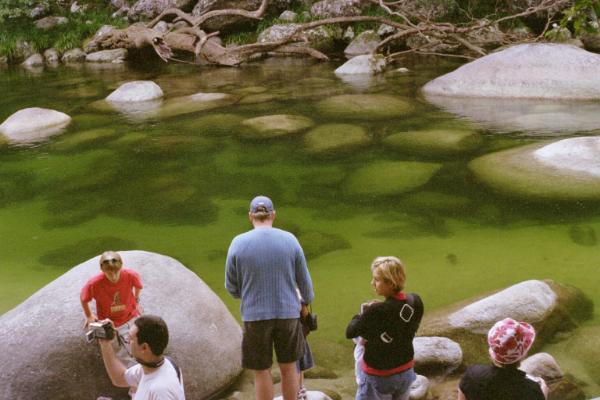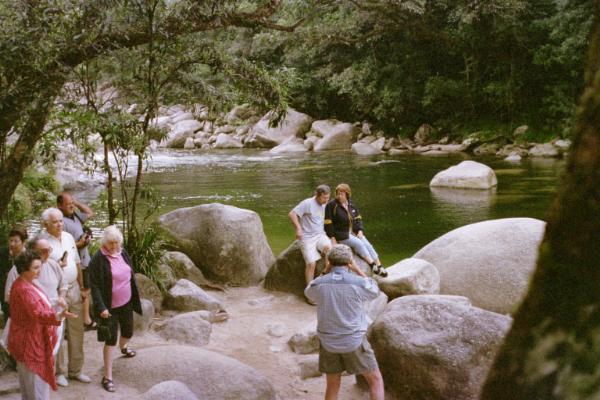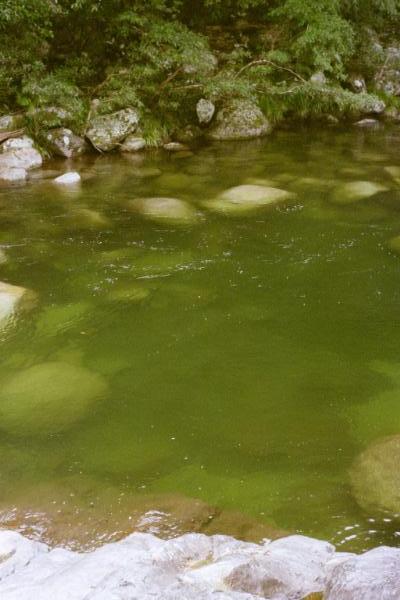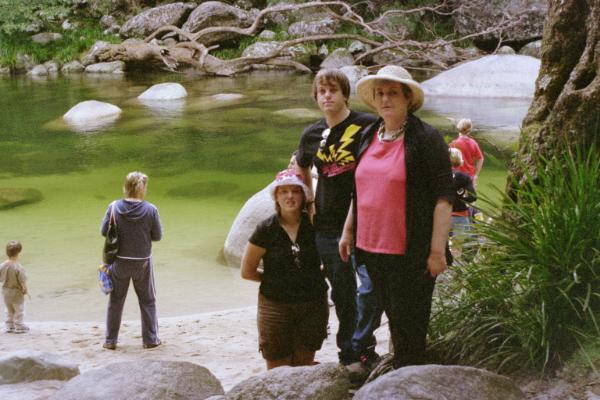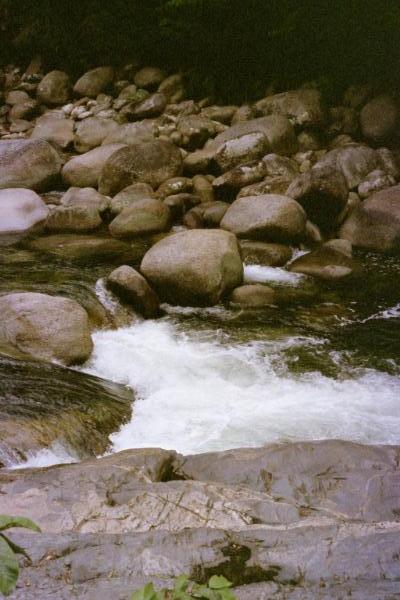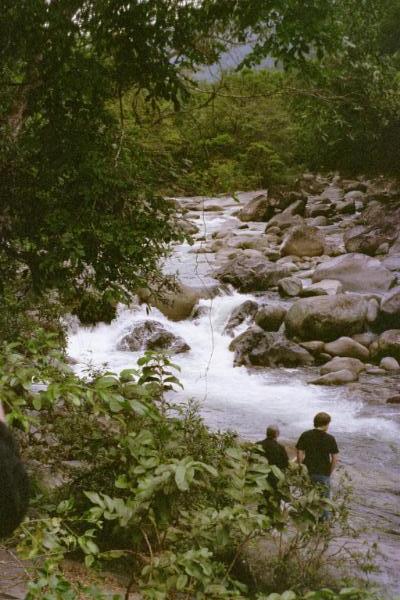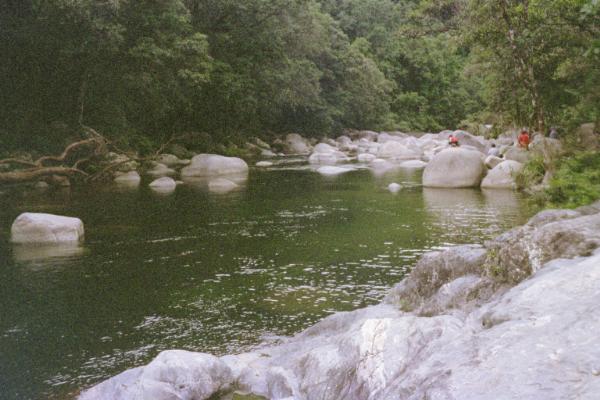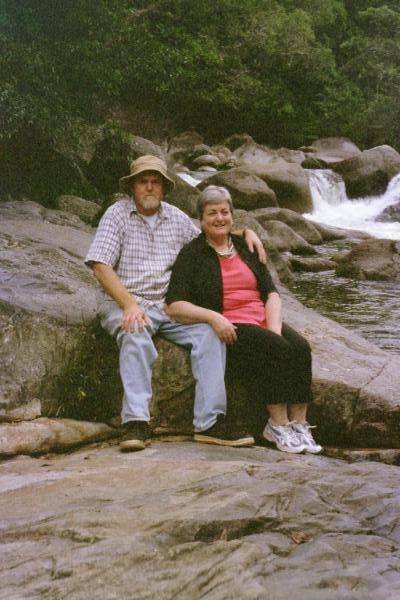________________________________________________________________________
Note: To make the text larger or smaller, do the following things: If you are right-handed, use the cursor in the following way:
- Holding the control button down, roll your cursor forward to make the text larger or roll your cursor backwards to make the text smaller.
________________________________________________________________________________________________________________
SkyRail Trip and the Kuranda Steam Train Trip 01.07.04
We enjoyed a return (round trip) Skyrail Rainforest Cableway experience combined with the historic Kuranda Scenic Railway to create the perfect half day rainforest itinerary. In our ten days allowed for or Port Douglas holiday, we had allowed ourselves two days to travel by car from Brisbane to Cairns
_____________________________________________________________________________________________________________
See: www.skyrail.com.au …. See text extract below:
Skyrail Rainforest Cableway is located just 15 minutes north of Cairns city and 50 minutes south of Port Douglas in Cairns, Tropical North Queensland, Australia.
Embark on a fascinating journey of discovery with Skyrail Rainforest Cableway over and deep into Australia’s Wet Tropics World Heritage Area that has survived against all odds to become the home of the world’s oldest continually surviving tropical rainforest.
Enjoy a truly unique perspective of this ancient landscape; glide metres above the pristine jungle canopy before descending to explore the rainforest close up.
________________________________________________________________________________________________________________
Welcome to Skyrail, the World’s Most Beautiful Rainforest Experience
Skyrail Rainforest Cableway, Cairns Australia, is a world first in environmental tourism taking you on an amazing experience over Australia’s World Heritage listed Tropical Rainforest canopy and deep into the forest.
The Skyrail experience, spanning 7.5kms over pristine rainforest, allows you to explore the wonders of an ancient tropical rainforests and learn about one of the most botanically fascinating and diverse areas on earth. Gliding just metres above the rainforest canopy in comfortable 6-person gondola cabins the Skyrail journey immerses you in an intimate rainforest experience where you’ll see, hear, smell and become part of the tropical rainforest environment.
Relax and enjoy the stunning rainforest scenery, panoramic views of the Cairns’ tropical region and the glittering waters of the Coral Sea. Alight at Skyrail’s two rainforest mid-stations, Red Peak and Barron Falls, where you’ll explore this amazing environment from the forest floor on boardwalks, scenic look-outs and in the state-of-the-art Rainforest Interpretive Centre. Voted Australia’s Best Major Tourist Attraction, the multi-award winning Skyrail is recognised not only as a premier tourist experience, but as a world leader in eco-tourism, providing you with a truly unique rainforest experience available no where else in the world.
Skyrail can be enjoyed as complete day tour adventure or combined as a package with a number of Cairns’ other leading tourist attractions. Skyrail’s Kuranda Terminal is located a short walk from the famous village of Kuranda where you’ll be able to enjoy the local attractions and shopping. A one-way Skyrail Experience will take approximately 90 minutes to complete and for a return experience you should allow 2½ hours. Our trip map section contains more information.
Skyrail’s Caravonica Terminal is located just 15 minutes drive from Cairns city. Port Douglas is situated north, only 50 minutes from Skyrail. Both of these locations are conveniently serviced by regular coach transfer pick-ups. Self-drive passengers will also find Skyrail’s location easily accessible.
Australia’s Tropical Rainforests
Australia’s Tropical Rainforests cover approximately 900,000 square hectares and are internationally recognised as being one of the most ecologically fascinating natural areas in the world. These forests contain an amazing array and diversity of flora and fauna.
Stretching for over 500 kilometres along Tropical North Queensland’s coastline, these rainforests are the oldest continually surviving rainforests on earth. Despite their relatively small size, the rainforests are home to an amazing diversity of life of Australia’s plants and animals.
To protect these rainforests, and to ensure that they are preserved for future generations, they were placed on the World Heritage list in 1988.
Tropical Rainforest Facts
To be classified as a tropical rainforest, the area must receive at 1.3 metres of rain per annum. The mean average rainfall in Australia’s Tropical Rainforests varies between 1.2 metres and 3 metres per annum; 60% of which falls in the summer months, December to March.
- Approximately 3,000 different plant species from 210 families are found in Australia’s Tropical Rainforests and include:
- 65% of Australia’s ferns
- 21% of the country’s cycads
- 37% of its conifers
- 30% of its orchid species
- The rainforests are also home to a diverse range of Australian animals including:
- 36% of Australia’s mammals
- 30% of its marsupials including tree kangaroos and possums
- 58% of its butterflies
- 48% of its bird species
- 25% of its frog and reptiles
- 37% of its freshwater fish
- 50% of the country’s bat species.
- Protected within the World Heritage area are over 395 rare or threatened plants.
- The World Heritage contains 12 of the world’s 19 families of primitive flowering plants.
- Some of the trees found here are more than 3,000 years old. The tallest trees in the forest reach up to 60 metres.
- These rainforests of Tropical North Queensland are home to one of the world’s largest flightless birds, the Southern Cassowary, and to Australia’s most primitive kangaroo, the Lumholtz tree kangaroo.
World Heritage Listing
Australia’s Tropical Rainforests are an exceptional, natural environment. To protect these rainforests and ensure they are preserved for future generations, they were placed on the World Heritage list in 1988. To qualify for natural World Heritage status a site must fulfil one of four criteria, Australia//
Tropical rainforests satisfy all four natural criteria, which are:
- Represents a major stage of the earth’s evolutionary history – The rainforests of Tropical North Queensland are like a window on how the world once was;
- Provide outstanding examples of ongoing environmental processes – The rainforest landscape contains clues as to how our world continues to evolve;
- Contain the highest quality of natural occurrences, or areas of natural beauty – Australia’s Tropical Rainforests are a place of exceptional natural beauty;
- Contain the most important natural areas for the conservation of the variety of life – Australia’s Tropical Rainforests are home to many rare and endangered plants and animals.

_______________________________________________________________________________________________________________
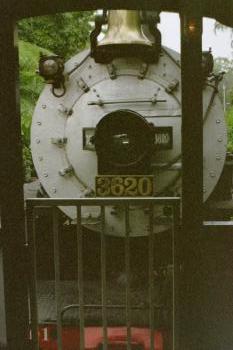
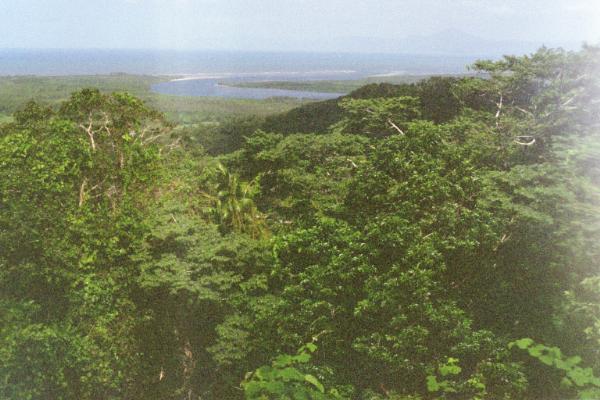
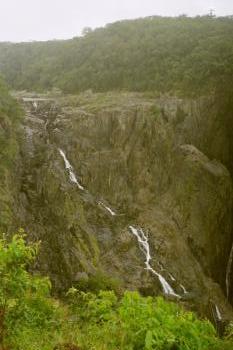
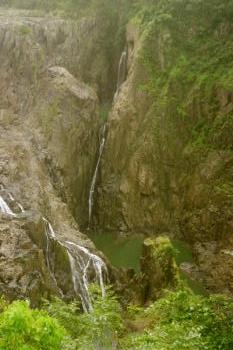

//
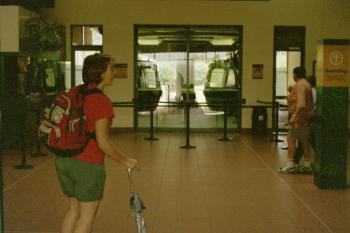
Australia’s Tropical Rainforests
Australia’s Tropical Rainforests cover approximately 900,000 square hectares and are internationally recognised as being one of the most ecologically fascinating natural areas in the world. These forests contain an amazing array and diversity of flora and fauna.
Stretching for over 500 kilometres along Tropical North Queensland’s coastline, these rainforests are the oldest continually surviving rainforests on earth. Despite their relatively small size, the rainforests are home to an amazing diversity of life of Australia’s plants and animals.
To protect these rainforests, and to ensure that they are preserved for future generations, they were placed on the World Heritage list in 1988.
Tropical Rainforest Facts
- To be classified as a tropical rainforest, the area must receive at 1.3 metres of rain per annum. The mean average rainfall in Australia’s Tropical Rainforests varies between 1.2 metres and 3 metres per annum; 60% of which falls in the summer months, December to March.
| |
- Approximately 3,000 different plant species from 210 families are found in Australia’s Tropical Rainforests and include:
- 65% of Australia’s ferns
- 21% of the country’s cycads
- 37% of its conifers
- 30% of its orchid species
- The rainforests are also home to a diverse range of Australian animals including:
- 36% of Australia’s mammals
- 30% of its marsupials including tree kangaroos and possums
| |
- 58% of its butterflies
- 48% of its bird species
- 25% of its frog and reptiles
- 37% of its freshwater fish
- 50% of the country’s bat species.
- Protected within the World Heritage area are over 395 rare or threatened plants.
- The World Heritage contains 12 of the world’s 19 families of primitive flowering plants.
- Some of the trees found here are more than 3,000 years old. The tallest trees in the forest reach up to 60 metres.
- These rainforests of Tropical North Queensland are home to one of the world’s largest flightless birds, the Southern Cassowary, and to Australia’s most primitive kangaroo, the Lumholtz tree kangaroo.
World Heritage Listing
Australia’s Tropical Rainforests are an exceptional, natural environment. To protect these rainforests and ensure they are preserved for future generations, they were placed on the World Heritage list in 1988. To qualify for natural World Heritage status a site must fulfil one of four criteria, Australia
Tropical rainforests satisfy all four natural criteria, which are:
- Represents a major stage of the earth’s evolutionary history – The rainforests of Tropical North Queensland are like a window on how the world once was;
- Provide outstanding examples of ongoing environmental processes – The rainforest landscape contains clues as to how our world continues to evolve;
- Contain the highest quality of natural occurrences, or areas of natural beauty – Australia’s Tropical Rainforests are a place of exceptional natural beauty;
- Contain the most important natural areas for the conservation of the variety of life – Australia’s Tropical Rainforests are home to many rare and endangered plants and animals.

Claire at entry to the cable car at Carvonica Terminal
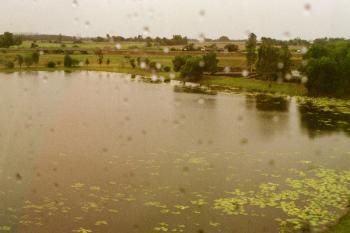
Passing above one of the dams at Carvonica Terminal
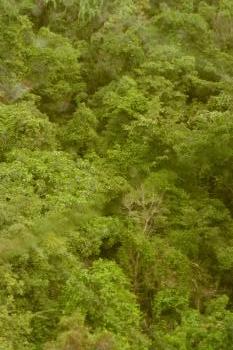
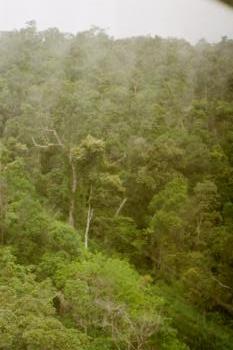
Some of the Rainforest which emerges
on the slope above Carvonica Terminal
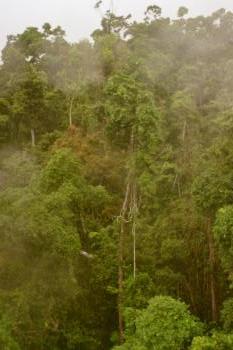
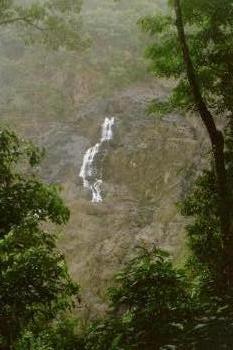
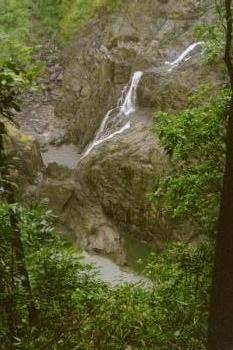
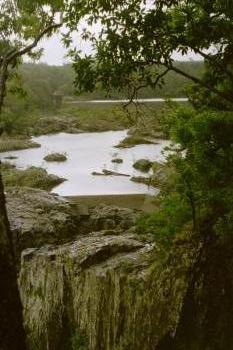
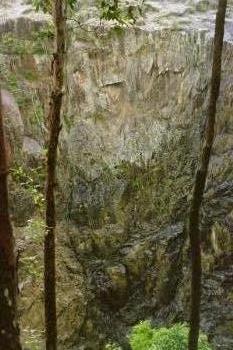
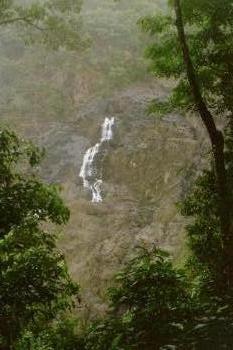
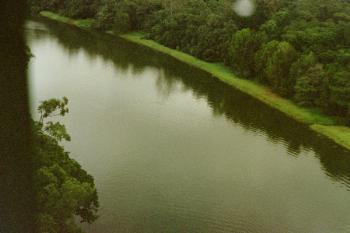
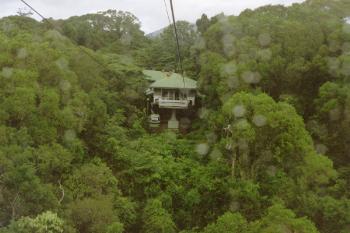
Kuranda Scenic Railway:
Board the historic Kuranda Scenic Railway as it meanders its way between Cairns and Kuranda.
Opened in 1891, this famous railway ascends from the coastal plains of Cairns through Freshwater Railway Station and on to Kuranda, the Village in the Rainforest, some 328 metres (1,076 feet) above sea level.



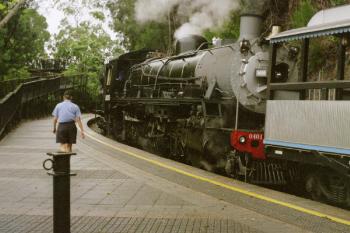
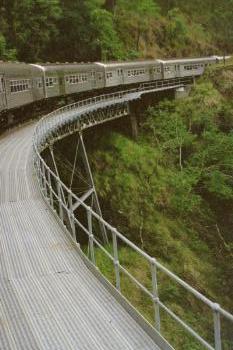
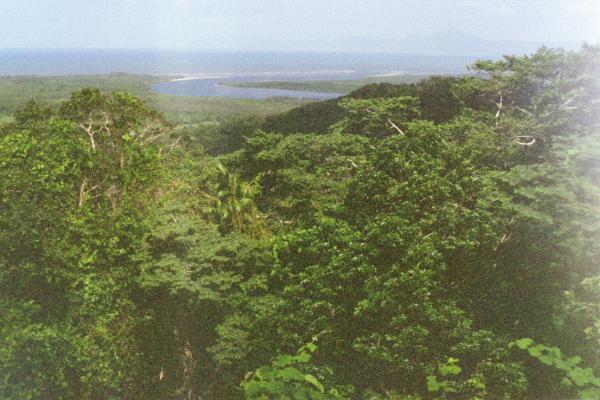
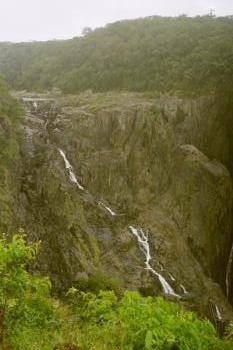
________________________________________________________________________________________________________________
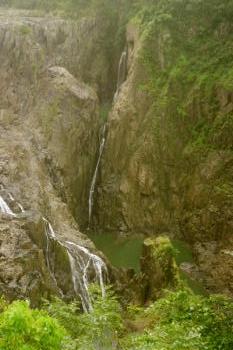
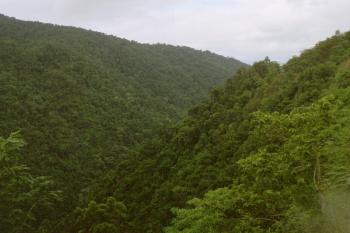
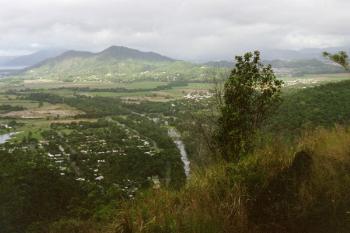
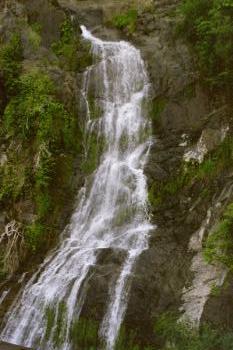
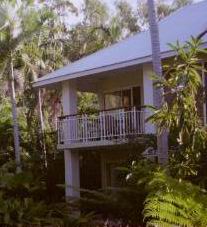
Unit Where We Stayed

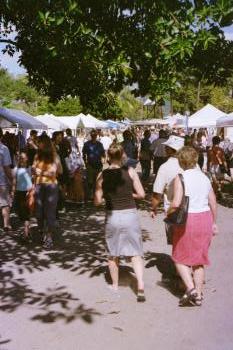
Some of the many people at the Sunday Markets on the Pt. Douglas foreshore …..
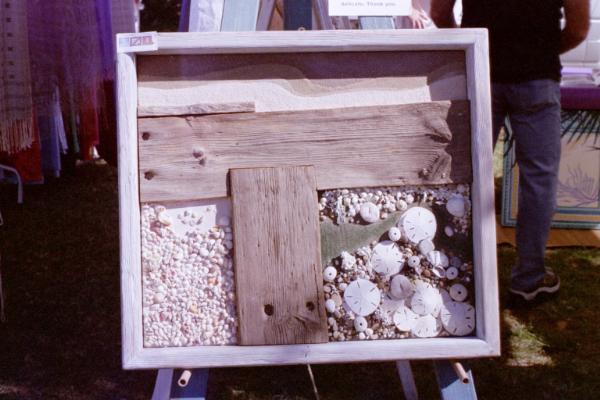
One of the many Pt. Douglas stalls at the Sunday Markets on the Pt. Douglas foreshore ….. this stall
by a local artist ….. made from driftwood and shells

Park on the foreshore of Pt. Douglas
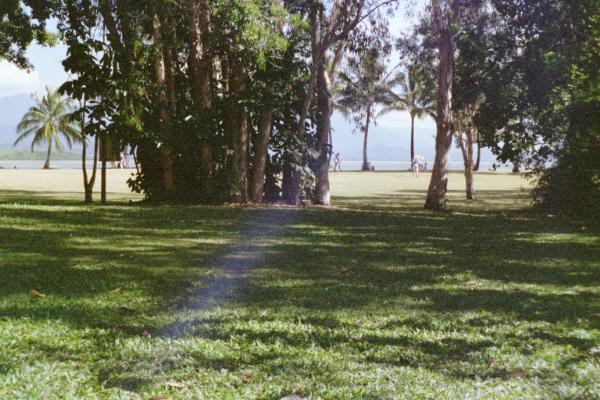
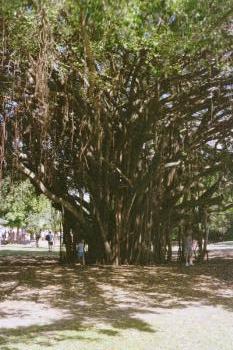

Four Mile Beach at Pt. Douglas
________________________________________________________________________________________________________________
Mossman Gorge
When you walk the trails of Mossman Gorge, marvel at a rushing waterfall, or rest under a leafy, lush tree, you’re stepping through history – 135 million years’ worth, in fact. That’s how long the landscape of the Daintree Rainforest has been evolving. Today, it’s the world’s oldest continuously surviving rainforest, spanning 120,000 hectares of land and water.
Just one hectare of the Daintree Rainforest is home to an estimated 30,000 species of plants and animals, making it one of the most complex ecosystems on earth.
_______________________________________________________________________________________________________________
See the amazing website of Mossman Gorge. My photos are a tiny presentation of Mossman Gorge.
